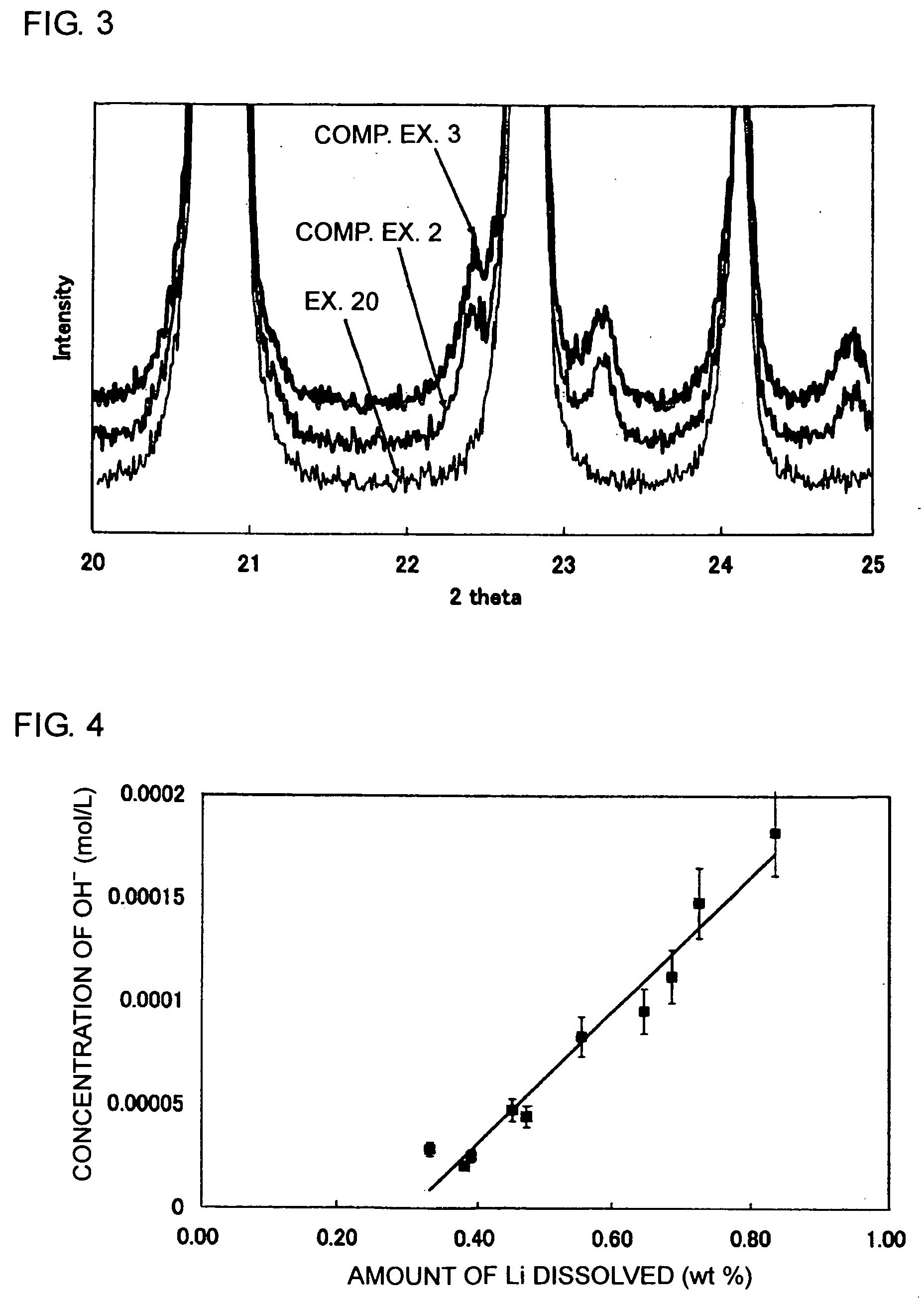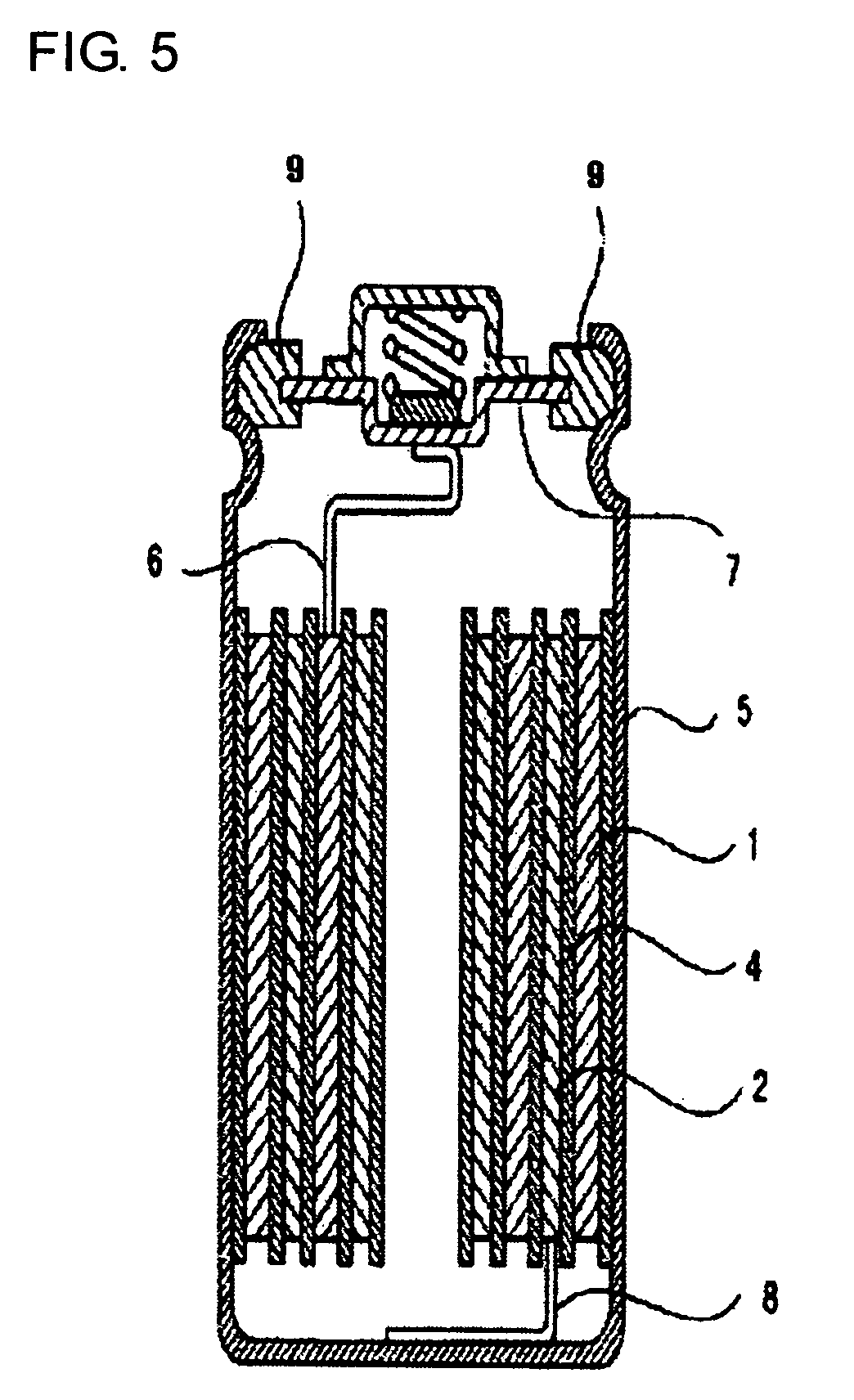Method of producing active material for lithium secondary battery, method of producing electrode for lithium secondary battery, method of producing lithium secondary battery, and method of monitoring quality of active material for lithium secondary battery
- Summary
- Abstract
- Description
- Claims
- Application Information
AI Technical Summary
Benefits of technology
Problems solved by technology
Method used
Image
Examples
embodiment
EXAMPLE 1
[0043]A pH standard solution of a phthalic salt (pH 4.01) produced by KISHIDA CHEMICAL Co., Ltd. was used as a cleaning solution. The cleaning solution at this time was at pH 4.0.
[0044]100 mg of a LiFePO4 sample (sample A) including Li3PO4 was weighed out and 10 ml of the cleaning solution was added to this sample, and the resulting mixture was cleaned for 1 hour by ultrasonic treatment in an ultrasonic pretreating apparatus.
[0045]The cleaning solution after the above cleaning was filtrated with a filter in order to remove the sample not dissolved by cleaning, and an amount of P dissolved in the cleaning solution was quantified by Inductively Coupled high frequency Plasma emission spectroscopic analysis (ICP emission spectroscopic analysis).
[0046]The amount of P dissolved was calculated by the following equation.
Amount of P dissolved (% by weight)=(amount of P dissolved in a cleaning solution (mg)×100) / amount of sample (mg)
[0047]In order to identify a pH value of the cleani...
example 2
[0048]Acetic acid and sodium acetate were mixed in a ratio of 1:1 by weight and pure water was added to the resulting mixture to prepare a 1.0% by weight aqueous solution of this mixture, and this aqueous solution was used as a cleaning solution. The cleaning solution at this time was at pH 4.5. A sample was cleaned, the amount of P dissolved in the cleaning solution was quantified, and a pH value of the cleaning solution was measured by the same procedure as in Example 1 except for using this cleaning solution.
example 3
[0049]Acetic acid and sodium acetate were mixed in a ratio of 1:10 by weight and pure water was added to the resulting mixture to prepare a 1.0% by weight aqueous solution of this mixture, and this aqueous solution was used as a cleaning solution. The cleaning solution at this time was at pH 5.6. A sample was cleaned, the amount of P dissolved in the cleaning solution was quantified, and a pH value of the cleaning solution was measured by the same procedure as in Example 1 except for using this cleaning solution.
PUM
 Login to View More
Login to View More Abstract
Description
Claims
Application Information
 Login to View More
Login to View More - R&D
- Intellectual Property
- Life Sciences
- Materials
- Tech Scout
- Unparalleled Data Quality
- Higher Quality Content
- 60% Fewer Hallucinations
Browse by: Latest US Patents, China's latest patents, Technical Efficacy Thesaurus, Application Domain, Technology Topic, Popular Technical Reports.
© 2025 PatSnap. All rights reserved.Legal|Privacy policy|Modern Slavery Act Transparency Statement|Sitemap|About US| Contact US: help@patsnap.com



